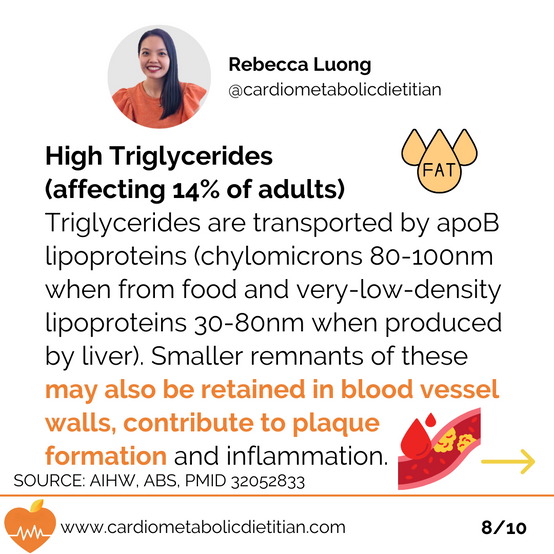Did you know? 2 in 3 Australian adults have abnormal blood fats (dyslipidaemia)
- Dr Rebecca Luong
- Apr 20, 2023
- 2 min read
Updated: Apr 22, 2024
1️⃣High Low-Density Lipoprotein Cholesterol And Total Cholesterol (affecting 33% of adults): LDL 😈 (diameter 20-25nm) makes up 90% of circulating apoB lipoproteins, transports cholesterol in blood to cells, and can move in and out of the inner lining of blood vessel walls. LDL cholesterol is used to estimate LDL particle levels. As LDL particles increase, there is a higher probability of retention of LDL particles in blood vessel walls which become susceptible to oxidation, triggering responses such as plaque formation, inflammation, and
vascular calcification. Smooth muscle cells also multiply, moves to the surface of the plaque, forms a cap and further thickens the blood vessel wall. The narrowing of the blood vessel means there is reduced blood flow and
supply of oxygen to organs.Over time the cap can erode and release unstable plaque into the bloodstream which can contribute to the formation of a blood clot.There is a dose-dependent relationship. For each 1 mmol/L reduction in LDL cholesterol, there is a 22% relative risk reduction in cardiovascular events over 5 years e.g. heart attack, ischaemic stroke, coronary revascularisation.
2️⃣Low High-Density Lipoprotein Cholesterol (affecting 23% of adults): HDL 😇 (7-15nm) contains mainly apoAI lipoprotein, reverse transports cholesterol to the liver, may slow plaque progression, has antioxidant, anti-inflammatory properties and possibly host defence mechanisms for immunity. HDL cholesterol is used to estimate HDL particle levels.
3️⃣High Triglycerides (affecting 14% of adults): Triglycerides are transported by apoB lipoproteins (chylomicrons 80-100nm when from food and very-low-density lipoproteins 30-80nm when produced by liver). Smaller remnants of these may also be retained in blood vessel walls, contribute to plaque formation and inflammation.
🟠P.S. In some conditions e.g. metabolic syndrome, diabetes, where there is cholesterol-poor LDL, directly measuring LDL levels or apoB concentration may more accurately reflect LDL particle levels and atherosclerotic cardiovascular disease risk. Research 💡 on mechanisms are ongoing, particularly on HDL function. Read 📕 referenced articles for details.
🌟 Hope you found this useful!
Source:




















